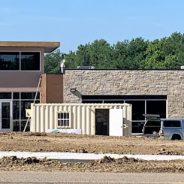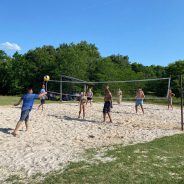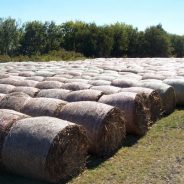Nationwide Outage Impacts Texas Work Search Websites

WorkInTexas.com, Related Sites Are Currently Down; TWC Establishes Page Highlighting Other Job Search Tools
AUSTIN – Three work search websites in Texas are offline following a nationwide outage impacting many states’ job search websites. Texas Workforce Commission (TWC) contracts with Geographic Solutions, Inc (GSI) to host WorkInTexas.com and two related sites, MyTXCareer.com and TXInternshipChallenge.com. The outage at GSI started on Sunday, June 26. TWC is working with GSI to understand the impact of the outage and confirm when the system will be online again, although it is anticipated that the sites will be down until early next week.
TWC has created a webpage for individuals who need resources to attain employment, as well as to meet work search requirements during these outages. On the new page, there are alternative resources and a list of other popular work search websites. In addition, passing a Metrix Learning course is deemed an acceptable work search activity and is free to all Texans.
Local Workforce Solutions offices remain open, with a full staff ready to assist both employers and job seekers. Job seekers can meet their work search requirements and obtain reemployment resources at a local office. Those resources include skills assessments for occupational matching, instructional workshops such as resume preparation, and labor market information. Additionally, in-person and virtual job fairs are continually held across the state and can be found on the TWC Job Fairs webpage.
Although the technical outage from GSI has resulted in WorkInTexas.com, MyTXCareer.com, and TXInternshipChallenge.com going offline, TWC’s website, twc.texas.gov, is managed in-house, and is not impacted.
Hospital District Board Approves FRPs For Landscaping, Communications Equipment
Hopkins County Hospital District Board of Directors during a noon meeting Tuesday, June 28, 2022, accepted RFPS and approved bids for landscaping plants and trees as well as proposed quote for communications equipment.
Landscaping
HCHD Board received two responses to the request for prices to supply all plants and trees for landscaping for the new Hopkins County EMS station/HCHD headquarters, being constructed across the street from the current offices and the hospital. J&D Landscaping of Mount Vernon proposed providing all trees and plants for $22,000 while M&S Landscaping of Sulphur Springs’ bid was $36,000.
The budget for landscaping was set at $24,000, with the cap noted in the RFP. HCHD CEO Brent Smith noted he had fielded questions from others, but those were the ones received. Sod and irrigation aren’t part of landscaping as they will already be provided.

HCHD President Kerry Law asked if it would be better to wait until later in the year to plant trees as opposed to July or August. Smith noted that it will likely be mid to late September before things are ready for the plants to go in the ground.
The RFP included landscaping specifics for the number and size of trees and plants, and requires the company to stand behind their plants and trees, replacing them if needed for a year, Smith noted. Law said when the bid is awarded the contract needs to stipulate they will standby their vegetation for a year from the planting.
The board approved Tammy Wright’s recommendation to accept the $22,000 option from J&D Landscaping.
Communications
Smith asked the HCHD Board of Directors to consider approving new communications equipment at the BuyBoard price of $359,782. No new equipment has been purchase for EMS communications since 2007, and the radios they do have aren’t necessarily serviceable. EMS have managed to find some used radios they’ve purchased from online merchants when necessary to replace portable units that no longer work.
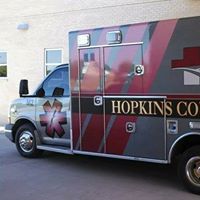
Smith noted that the county and city have over the past few years been able to obtain grant funding to replace some of their communications equipment, but even those obtained 6-7 years ago are considered antiquated by current standards.
The communications equipment proposed, Smith noted, will allow EMS to talk to everyone in the service areas, as well as on mutual aide calls with other emergency responders, including Texas A&M University-Commerce. This will make response safer for EMS personnel making emergency calls as well as beneficial in the care and treatment of patients they are dispatched to treat. The equipment will work with the current CAD system, which is still a good system, existing communications equipment in units and portables as well as new equipment being installed. This would also reduce chance of human error on calls as well.
He described the technological difference being the difference between analogue and digital mobile phone systems. As he understands it, the system should also be more secure, as it’s all cloud based. It should carry HCHD/Hopkins County EMS years into the future. Aside from the furniture, this will be the main big purchase to go into the new station/HQ in the process of being completed.
The new system he proposed purchasing too should end up saving some money annually on maintenance costs for updates and improvements. The new system, Smith estimated, would only coast $7,000-$8,000 per year compared to the $10,000 currently being spent. A warranty and training would be included in the contract at the quoted amount, Smith assured Board member Kristy Shultz.
EMS is approaching communications upgrades in a 3 phase plan. This would be phase one. The second phase would be to replace radios. He hopes to be able to apply for grant funding to help replace the old radios in the future. However, when the new radios are replaced, provided they still are in good working order, the current plan is to keep them as backup should additional radios be needed or others have to be out of service for repairs or until replacements can be found. The third phase would be replacing the current radio repeaters.
Board member Tammy Wright said the equipment is needed and made the motion to approve the purchase of new communications equipment at a rate f $359,782. Shultz seconded the motion, which then received the approval of all four board members present — Law, Shultz, Eimy Medina, Wright.
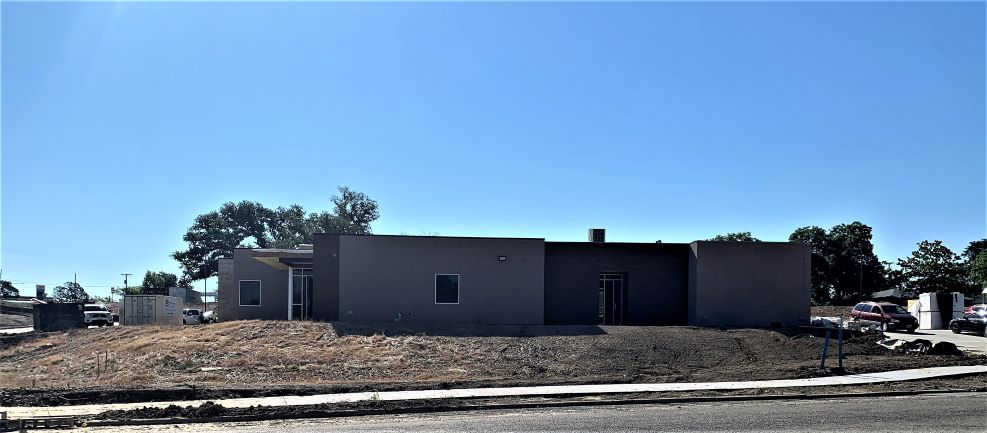
Audits
Smith also gave a brief update on a Texas Department of State Health Services and a single Audit from Forvis (formerly BKD) for nursing home facilities.
He said he was ecstatic with the way the DSHS audit went. In the past the ones he’s dealt with from DSHS and RAC have been excruciatingly painful. Only one out of 10 hospital districts awarded tobacco settlement funding have to undergo the extensive audit. HCHD was the lucky one to do so this year. DSHS did a great job. All Is were dotted and Ts crossed. The district receives about $230,000 annual tobacco audit settlement funding. He commended the HCHD team for their work getting everything ready and during the audit.
The Forvis audit of the nursing homes is going well. He said aside from tying up a few loos ends regarding the first round of COVID funding. All looks good, they are still working to get a few credit card receipts for one facility, which shouldn’t total a huge amount, rounded up and documents. The five other facilities are in.
Other information
The board approved a real estate resolution regarding the sale of Hospital District property on Davis Street, and authorized Smith to complete the property agreement. HCHD Board Attorney Tommie Allison said the resolution would need to be attached to the deed as well as a legal description for the cash deal.
The Hospital District, on behalf of the board, acting as Hopkins County Holdings, approached the city about rezoning property at 525 Church Street from a multifamily to professional office zone, and 539 Davis street from single family 10 to professional office zoning. The properties are not currently in use. HCHD applied to the city for have the properties rezoned. It received approval on first reading at the June City Council meeting and is expected to be on the July 2022 council agenda for second and final reading.
Smith too noted that the district has approved Stacy Holly to fill the final financial opening in the district. She will begin working as staff accountant on July 5. She will start working with the staff to learn how things work and jump right in.
It was also noted that Kayla Price has been named the new director for Hopkins County Healthcare Foundation, with the position falling under or at least partly under HCHD, and in line with CHRISTUS operations as well.
Smith said EMS has had a busy few weeks running calls.
He proposed the next HCHD Board of Directors meeting be conducted on July 19. He anticipates having furniture bids for the board by that meeting.
The board agreed to the date. The time of the meeting had yet to be set. The four members present said they had no preference for either a noon or evening meeting next month.
Smith said he would survey the three members who were not able to attend the June 28 meeting to see if there’s a preference. This would also allow him to have everything ready for that meeting and still allow him to prepare for the upcoming out-of-town industry conference better than having the meeting a week later, which would be the day before he leaves for the biennial conference.
The HCHD Board then entered into an executive session to discuss any Hospital District personnel, salaries and/or property matters presented for discussion and consideration since the last meeting. The meeting concluded with no action take following the closed session, Smith reported.
DPS Increases Enforcement to Keep Roads Safe on July 4

AUSTIN – The Texas Department of Public Safety (DPS) Texas Highway Patrol (THP) will be initiating two traffic safety campaigns during the holiday weekend looking for people violating traffic laws from Friday, July 1, through Monday, July 4.
“Our nation’s freedom is something worth celebrating, and I encourage everyone to do it in a responsible way,” said DPS Director Steven McCraw. “This includes being mindful of our state’s traffic laws and being courteous of other drivers on the roads, so everyone can have a good holiday.”
Operation Holiday will run July 2 through July 4 and will target drivers who violate traffic laws, including those speeding, not wearing their seat belts or driving while intoxicated. During the 2021 campaign, there were 55,776 citations and warnings issued. This includes 17,376 citations and warnings for speeding; 2,006 for people driving without seat belts or child safety seats; and 1,632 for people driving without insurance. In addition, there were 298 people arrested for driving while intoxicated, 280 felony arrests and 145 fugitive arrests.
Operation CARE (Crash Awareness Reduction Effort) will run from July 1 through July 4, and focuses on reducing crashes and violations of the state’s Move Over, Slow Down law. From Jan. 1 through June 7, 2022, there were 4,135 Move Over, Slow Down violations. The law requires all drivers to slow down when police, fire, EMS, Texas Department of Transportation (TxDOT) vehicles and tow trucks are stopped on the side of the road with their emergency lights activated.
DPS offers the following safety tips for people driving during the Fourth of July holiday:
- Don’t drink and drive. Make alternate plans if you are consuming alcohol.
- Move Over or Slow Down for police, fire, EMS, TxDOT vehicles and tow trucks stopped on the side of the road with emergency lights activated.
- Buckle up everyone in the vehicle — it’s the law.
- Slow down, especially in bad weather, heavy traffic, unfamiliar areas or construction zones.
- Eliminate distractions while driving, including the use of mobile devices. Texas law prohibits the use of portable wireless devices to read, write or send an electronic message unless the vehicle is stopped. If you’re using a navigation device or app, have a passenger operate it so you can keep your eyes on the road.
- Drive defensively, as holiday travel can present additional challenges.
- On multi-lane roads, use the left lane for passing only. Not only is it courteous driving and avoids impeding traffic, Texas law requires slower traffic to keep to the right and to use the left lane for passing only (when posted).
- Don’t cut in front of large trucks, and try not to brake quickly in front of them. They can’t maneuver as easily as passenger vehicles and pickup trucks.
- If you can Steer It, Clear It: If you are involved in a non-injury crash and your vehicle can be moved, clear the traffic lanes to minimize traffic impact. Leaving vehicles in a traffic lane increases traffic congestion and leaves those involved with an increased risk of harm or a secondary wreck. On some highways, if you don’t move your vehicle when it’s safe to do so, it’s against the law.
- Keep the Texas Roadside Assistance number stored in your phone. Dial 1-800-525-5555 for any type of assistance. The number can also be found on the back of a Texas Driver License.
- Check your vehicle to make sure it is properly maintained and always ensure your cargo is secure.
- Report road hazards or anything suspicious to the nearest law enforcement agency.
- Monitor weather and road conditions wherever you are traveling. For road conditions and closures in Texas, visit Drive Texas.
DASH Your Way to Healthier Blood Pressure

By Johanna Hicks, Texas AgriLife Extension Agent Family & Community Health Agent, Hopkins County, [email protected]
You might have heard about the DASH eating plan. It’s more that just a seasoning. The Dietary Approaches to Stop Hypertension (DASH) eating plan is part of a healthy lifestyle that focuses on incorporating foods that help lower high blood pressure, as well as incorporating physical activity into your daily routine. The DASH eating plan is not intended to treat hypertension but following some of the lifestyle modifications has been shown to lower blood pressure for individuals. If you are under the care of a physician due to hypertension, be sure to follow his or her advice.
The National Institutes of Health define blood pressure into three areas:
- Normal
- Pre-hypertension
- Hypertension (stage 1 or 2)
Blood pressure is measured using two numbers: Systolic is the top number of the reading and measures the pressure in your blood vessels when your heart beats. Diastolic is the bottom number which measures the pressure in your blood vessels when the heart rests.
Normal blood pressure is a systolic reading of 120 or less, and diastolic number of less than 80. So, if your blood pressure is less than 120 over 80 mmHg (millimeters of mercury), you have normal blood pressure. Pre-hypertension readings are between 120-139 over 80-89. Your doctor might tell you to make changes in the foods you eat and be more active.
Hypertension is a condition where high amounts of pressure build up in the vessels or arteries. There are no symptoms, so some might not even know they have hypertension until their blood pressure is measured. Stage 1 hypertension is 140-159 over 90-99. Stage 2 is a reading of greater than 160 over greater than 100.
Whether you have pre-hypertension hypertension, or trying to prevent hypertension, the DASH eating plan can help achieve goals for reducing high blood pressure in many people. The DASH plan has many health benefits, including lowering blood pressure, lowering LDL (lousy) cholesterol, reducing stress on the kidneys, reducing the risk of type 2 diabetes, and may promote weight loss.
The DASH eating plan is a healthy eating pattern that emphasizes: fruits; vegetables; low-fat dairy; whole grains; lean protein (such as fish and poultry); nuts, seeds, legumes; and limits sodium, saturated fat, and added sugars. While we need a small mount of sodium to help our bodies work properly, most Americans eat more than they should – about 3,400 mg per day. The DASH plan recommends lowering sodium intake to less than 2,300 mg per day (about 1 teaspoon). Individuals with hypertension or pre-hypertension may be advised to lower sodium intake to 1,500 mg per day.
So where is sodium found? Processed and ready-to-eat foods, such as canned foods, cereals, mixed dishes, canned soups, processed meats, and prepared meals such as frozen dinners can be the main culprits. Look at the Nutrition Facts Label and choose foods with 5% daily value or less. Limiting the amount of salt added at the table and during food preparation may also help reduce sodium intake. Physical activity is also part of a healthy lifestyle by helping maintain or achieve a healthy weight; reducing the risk of cardiovascular disease, diabetes, obesity; and helping lower stress. Aim for 30 minutes most days of the week. You can begin with small changes, such as walking for 10 to 15 minutes per day.
Making a change to the DASH eating plan doesn’t happen overnight. In fact, making small changes over a few weeks is recommended. For more information, contact the Hopkins County Extension Office.
Closing Thought
Today’s to-do list: count my blessings, pray, practice kindness, let go of what I can’t control, listen to my heart, just breathe, pray again.
Contact Johanna Hicks, Texas A&M AgriLife Extension Family & Community Health Agent at the Hopkins County Office, P.O. Box 518, 1200-B West Houston, Sulphur Springs, TX 75483; 903-885-3443; or [email protected].
Chamber Connection – June 29: Get Ready For The 30th Annual Independence Day Concert
By Butch Burney, [email protected]
Fireworks, music and a celebration of our country is on tap for Saturday, July 2, on the downtown square.
The 30th anniversary of the local Independence Day Celebration, presented by the Sulphur Springs Symphony League and featuring the East Texas Symphony Orchestra, will start at 8 p.m. Bring your lawn chairs!
Stew Logo Contest
It’s not too late to enter the logo contest for the 53rd Annual Hopkins County Stew Contest. You have until Thursday, June 30, to send your logo submission. The theme is “Road Trip — Destination Hopkins County.” The winning entry gets four T-shirts with the theme on it, four stew tickets, a tumbler, a quart ticket and a parking pass.
To enter, upload your design at HopkinsChamber.org or email to [email protected].
Mental Health First Aid
Lakes Regional will host a two-day event for Mental Health First Aid (MHFA), which is free and open to the public. The adult MHFA is 8:30 a.m. to 4 p.m. July 14 at the Lakes Regional Sulphur Springs location on Airport Road. The youth seminar will be 8:30 a.m. to 4 p.m. July 26.
To register, call 972-977-7295 or email [email protected].
Backstory Happenings
G3 Mercantile will be bringing country music singer Tommy Alverson to Backstory Brewery, along with Longhorn burgers and door prizes on July 9. Burgers will be served from 5-9 p.m., with the music going from 7-9 p.m.
Goodwill Appreciation
Goodwill Industries at 1320 West Shannon Road will be hosting a customer appreciation event from 11 a.m. to 2 p.m. July 9. Enjoy hot dogs, chips, water, soda, watermelon and a chance ot earn a discount off your purchases.
Handbag Bingo
The Hopkins County Health Care (HCHC) Foundation will be hosting the ever-popular Designer Handbag Bingo. Tickets and sponsorships are now available for this event which will be held on Thursday, August 4 at the Hopkins County Civic Center. Doors open at 5 p.m. and bingo play starts at 6 p.m.
This event provides an opportunity to support the initiatives of the HCHC Foundation while enjoying a ladies’ night out at bingo. Participants will receive a drink ticket, appetizers, and 10 rounds of bingo games. Each game provides an opportunity to win two handbags.
Tickets are $50 each or a table of eight is $500. Additional tickets are offered for bonus rounds and drinks.
Various sponsorship opportunities are available to underwrite the costs of handbags and other expenses.
In the past, handbags have been from designers such as Louis Vuitton, Gucci, Kate Spade, and Coach.
To register or sponsor go to handbagbingo22.givesmart.com and for more information, email [email protected] or call 903-438-4799 or 903-335-0705.
Ribbon Cuttings
- Vosh Graphix hosted a ribbon cutting at noon Thursday, June 23, at the Chamber office. Please welcome them to the business community.

- Greenleaf Mortuary hosted a ribbon cutting at noon Friday, June 24, at 200 Putman St. Please welcome them.
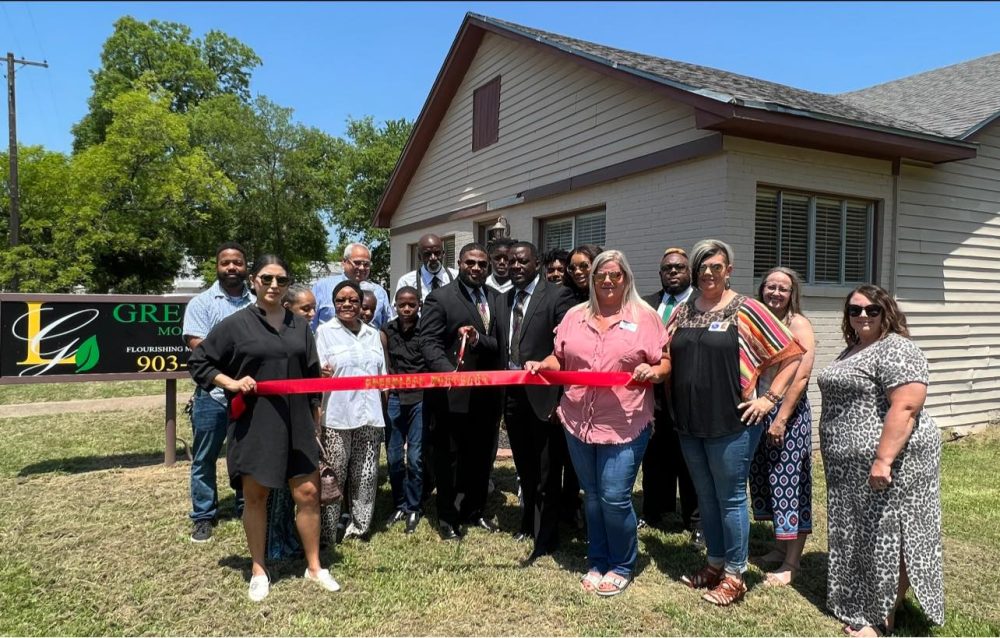
- Texas Pelvic Health will have a ribbon cutting at noon Wednesday, June 29, at 428 South Hillcrest Drive. Please join us for this event.
Sulphur Springs Resident Accused Of Choking Wheelchair-Bound Man
A 68-year-old Sulphur Springs man accused Monday evening of choking his wheelchair-bound son-in-law was arrested on a felony assault charge.

Hopkins County Sheriff‘s Deputy Josh Davis responded at 5:28 p.m. June 27, 2022, to what was reported as an assault at a County Road 2345 residence.
Upon arrival, Davis spoke with both the resident and his son-in-law, who also lives in the same household. David Cartwright Jr. was alleged to have grabbed his son-in-law, who is wheelchair-bound, around the neck and to have choked him. Cartwright was taken into custody at 6:11 p.m. after admitting he grabbed the other man around the neck with both hands, Davis alleged in arrest reports.
The 68-year-old Sulphur Springs man was booked into Hopkins County jail at 7:45 p.m. June 27, 2022, on a warrant for family violence assault-impeding breathing or circulation, according to arrest reports.
Cartwright remained in Hopkins County jail Tuesday, June 28, 2022, on the felony charge. Bond was set at $10,000, according to jail reports.

A 37-year-old Hooks man was jailed Sunday, June 26, 2022, on a warrant for violation of probation, which he was on for aggravated assault/possession of marijuana with intent to distribute.
Sulphur Springs Police Officer Cleve Williams stopped a Toyota Corolla at 2:38 a.m. June 26, 2022, on Interstate 30 west at mile marker 135 for a traffic violation. A records check showed Patrick Devon McDonald to have an outstanding Cobb County, Georgia warrant for his arrest. McDonald was taken into custody and transported by SSPD Officer Robble Acosta to jail.
The 37-year-old Hooks man was booked in by Williams at 4:08 a.m. on the warrant, according to arrest reports. He remained in Hopkins County jail Tuesday, June 28, 2022, held without bond for Cobb County authorities on the warrant, according to jail reports.
KSSTRadio.com publishes Sulphur Springs Police Department reports and news. The Police Department is located at 125 Davis St., Sulphur Springs, Texas. Non-emergency calls can be made to (903) 885-7602.
If you have an emergency dial 9-1-1.
The Sulphur Springs Police Department continues to serve its citizens with pride in its overall mission and will strive to provide the best possible police force in the 21st century.
If you have an emergency, dial 9-1-1
The Hopkins County Sheriff’s Office is located at 298 Rosemont Sulphur Springs, TX 75482. You can reach them for non-emergency matters at (903) 438-4040.
Cooper Lake State Park Offers 31 Educational And Recreational Programs In July 2022
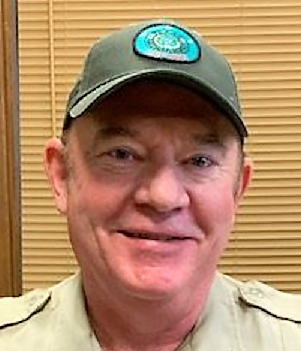
By Steve Killian, Complex Superintendent, Cooper Lake State Park, [email protected]
Cooper, Texas — Cooper Lake State Park is a “cool” place to visit in July! The sun, white sands, the water, educational programs and so much more await you at your Texas State Park. Speaking of sand, the park has again added white sand to both our swimming beaches (South Sulphur & Doctors Creek). This soft white sand will transport you to a more tropical setting. Our sand is perfect for building sandcastles or planting your beach umbrella for a day of swimming and relaxing fun.
During July, we are presenting 31 educational, and recreational programs about animals, plants, and outdoor activities found in Northeast Texas. Our exciting programs range from restorative nature hikes through the forest to stargazing astronomy programs under some of the darkest skies in this part of Texas. Other featured programming includes “Fishing with a Ranger”, Archery, and “Art in the Park.”


Why not bring your fun and learning-packed Saturday to a most amazing conclusion by relaxing at a picnic table watching your food cook on one of our many day-use picnic grills? If you are lucky enough to be camping, relaxing around a campfire is the best! The flickering light of a campfire transcends your spirit and rejoins you to feelings shared by our past generations. There is no better place to share a story or eat a meal with family and friends!
Free fishing at Cooper Lake State Park! Fish from the bank, off our piers, fishing wall, or try your luck along the shoreline. Note – Boaters and kayakers must have a valid Texas fishing license. Fish attractors have been placed around the Doctor’s Creek floating fishing pier and the fishing wall at South Sulphur to help increase fishing success. Fish attractors are being utilized to draw more catchable fish within reach for our park visitors – and its working! White bass, crappie, bluegill, bass, and catfish are commonly caught at both park units during July.
Other popular activities are hiking our trails or just resting under a giant Post Oak tree or camping at one of our tree-canopied campsites. We have cabins, too. Texas State Parks are great places to relax, recreate, and recharge!
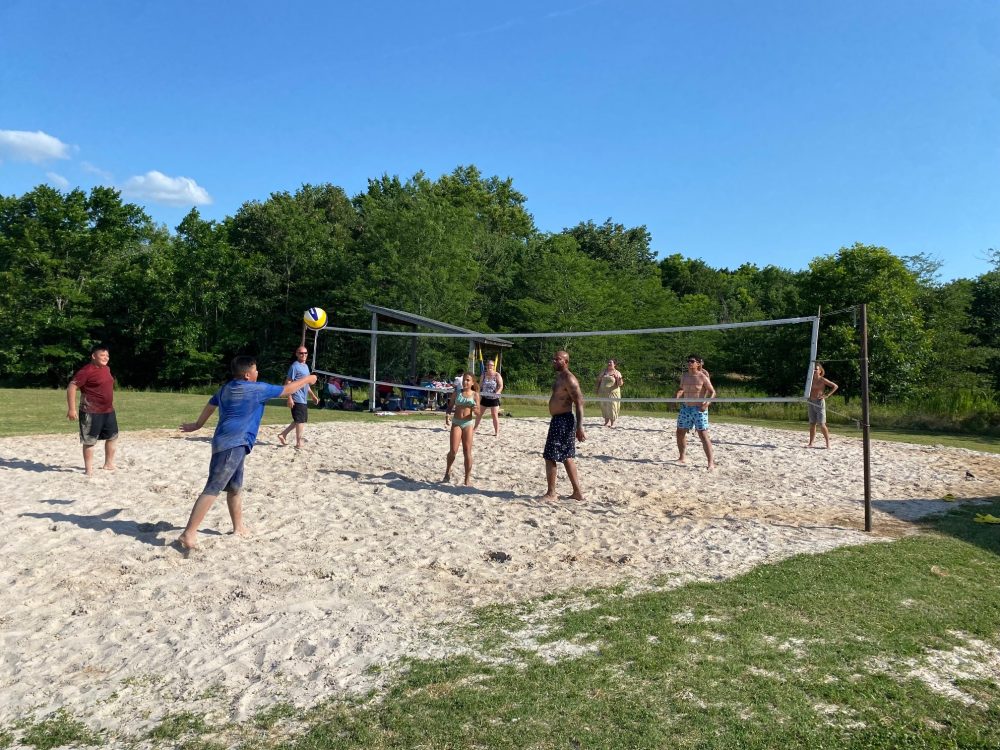

Park entrance fees are $5 for adults with kids 12 and under always free. Senior Texans 65 or older will only pay $3 to enter the park daily with a Bluebonnet Pass plus their traveling companion is $3 as well. Unlimited park entrances for you and everyone in your vehicle can be accomplished with the purchase of a Texas State Park Annual Pass for $70 which is good for over 12 months and at almost 90 Texas State Parks. Buy your pass and let your Texas adventuring begin! Note: All programs are free with a valid entrance permit.
For more information on this or other events and programs at Cooper Lake State Park, please visit and like our Facebook pages (Cooper Lake State Park – South Sulphur, 903-945-5256, and Cooper Lake State Park – Doctor’s Creek, 903-395-3100).
Cooper Lake State Park Events Calendars
South Sulphur Unit
- Friday, July 1
- S’mores with the Ranger: Meet at Gulls Bluff Day Use Area at 8:30 p.m. Bring your S’mores fixings and hear some campfire stories.
- Saturday, July 2
- Skins and Skulls — Who is the fastest or the furriest? Meet at Headquarters at 1 p.m. Get an inside look at some of the mammals, and reptiles of the park.
- Becoming a Junior Ranger – Meet at Headquarters 2:30 p.m. Check off activities to earn your Junior Ranger badge.
- Sunday, July 3
- Bike Parade –Meet at Honey Creek Day Use Area parking lot at 0 a.m. Join us for a pre-July 4th bicycle parade. Decorate your bike, then take a bike ride around the Honey Creek parking lot.
- Saturday, July 9
- Kid Fishing – 9 a.m. – 11 a.m. Meet at the Heron Harbor Fishing Wall. Bring your own fishing gear, no pole, no worries. We have a few fishing poles available to borrow. No experience needed!
- Sunday, July 10
- Art in the Park – Meet at Heron Harbor Day Use Area at 1 p.m. A chance to let loose your inner artist!
- Friday, July 15 – SS
- Stargazing – Meet at Heron Harbor Swim Beach at 8:30 p.m. We’ll have the telescopes out for viewing a planet or two. How many constellations can you see and name? Bring a lawn chair and bug spray.
- Saturday, July 16
- Go Take a Hike – Meet at Coyote Run Trail Head at 9 a.m. Join us on a short leisurely hike on Coyote Run trail getting a first-hand look at the flora and fauna of the park.
- Beginning Bird Watching – Meet at Heron Harbor Day Use Area at 10:30 a.m. Bring your binoculars, water, and sunscreen. We’ll walk, stop, and talk a bit about the birds we see around the day use area.
- Sunday, July 17
- Reading with the Ranger – Meet at Heron Harbor Day Use Area 10 a.m. Join us for a story about the nature around us.
- Friday, July 22
- Wildlife Detectives – Meet at Buggy Whip Restroom at 10:30 a.m. We’ll take a short walk around the pond at Buggy Whip. Explore how to determine the types of animals that may have been here from the signs they leave behind.
- Saturday, July 23
- Archery 101 — From 9 to 11 a.m. Meet at Buggy Whip Restroom. Registration is required, program limited to 15 participants. Reserve your spot by calling (903) 945-5256 or click on the following link to email Alicia O’Connor. No experience needed. Ages 10 and up. Equipment provided.
- Sunday, July 24
- Back Yard Bass Fishing – Meet at Heron Harbor Day Use Area, near the fishing wall, at 1 p.m. Learn how to fish on dry land. Join us as we learn to tie a hook onto the line, cast, catch, and release our fish while exploring fishing rules and fishing ethics.
- Friday, July 29
- Aquatic Science & Pond Life – Meet at Buggy Whip Restroom at 8:30 a.m. Discover what creatures live in the littoral zone. Collection buckets supplied.
- Saturday, July 30
- Becoming a Junior Ranger – Meet at Headquarters at 1 p.m. Check off activities to earn your Junior Ranger badge.
- Sunday, July 31
- Wonderful World of Wings – Meet at Heron Harbor Day Use Area at 1 p.m. Discover fascinating facts about bird wings and what makes them so very special.

Doctor’s Creek Unit
- Friday, July 1
- Is it heat illness? – Meet at Headquarters at 2 p.m. Learn the signs and symptoms of heat illnesses.
- Saturday, July 2 – DC
- Skins and Skulls – Who is the fastest or the furriest? Meet at Pelican Point Pavilion at 9 a.m. Get an inside look at some of the mammals, and reptiles of the park.
- Becoming a Junior Ranger – Meet at Pelican Point Pavilion at 10:30 a.m. Check off activities to earn your Junior Ranger badge.
- Sunday, July 3
- Bike Parade – Meet at Post Oak Amphitheater parking lot at 1 p.m. Join us for a pre-July 4th bicycle parade. Decorate your bike, then take a bike ride around the camping loop.
- Saturday, July 9
- Kid Fish with the Ranger – From 1-3 p.m. Meet at the Bluebonnet Fishing Pier. Bring your own fishing gear, no pole, no worries. We have a few fishing poles available to borrow. No experience needed!
- Sunday, July 10 – DC
- Art in the Park – Meet at Pelican Point Pavilion at 10 a.m. A chance to let loose your inner artist!
- Saturday, July 16
- Go Take a Hike – Meet at Cedar Creek North Loop Trail Head at 1 p.m. Join us on a short leisurely hike on Cedar Creek North Loop getting a first-hand look at the flora and fauna of the park.
- Sunday, July 17
- Reading with the Ranger – Meet at Pelican Point Pavilion at 1 p.m. Join us for a story about the nature around us.
- Friday, July 22 – DC
- Wildlife Detectives – Meet at the Pelican Point Parking Lot 8:30 a.m. We’ll take a short walk on the Cedar Creek South Loop. Explore how to determine the types of animals that may have been here from the signs they leave behind.
- Saturday, July 23
- Roving with the Ranger –Stop Ranger Alicia while she roves around the park from 1 to 2:30 p.m., and ask questions about the interpretive items she’s carrying.
- Sunday, July 24
- Back Yard Bass Fishing – Meet at Bluebonnet Day Use Area 10 a.m. Learn how to fish on dry land. Join us as we learn to tie a hook onto the line, cast, catch, and release our fish while exploring fishing rules and fishing ethics.
- Thursday, July 28
- Talk with a Master Naturalist – 10 a.m. Meet at Pelican Point Pavilion. Topic: Hummingbirds
- Friday, July 29
- Dutch Oven 101 – From 10:30 a.m. to 1:30 p.m. Meet at Pelican Point Pavilion. Happy trails on a cattle drive, yes indeed. Cast iron cooking was a part of that happiness. Reserve your spot for a hands-on cooking demonstration by calling (903) 945-5256 and or by emailing Alicia O’Connor at alicia.o’[email protected].
- Saturday, July 30 – DC
- Photography 101 – Meet at Bluebonnet Day Use Area at 9 a.m. Learn about composition, the rule of thirds, leading lines, the golden hour, and space. We’ll take a short walk on the lookout for photo chances.
- Becoming a Junior Ranger – Meet at Headquarters at 10:30 a.m. Check off activities to earn your Junior Ranger badge.
- Sunday, July 31
- Wonderful World of Wings – Meet at Pelican Point Pavilion at 10 a.m. Discover fascinating facts about bird wings and what makes them so very special.
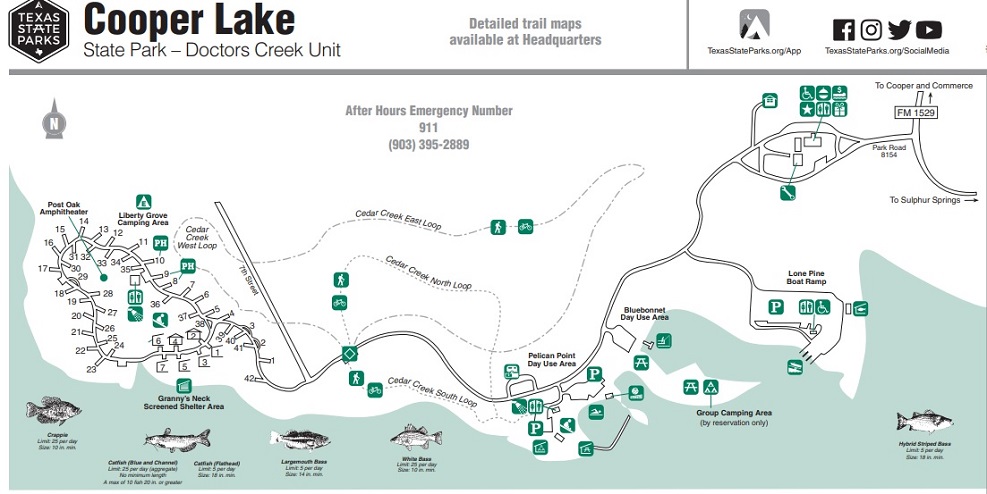
Sign up Now: Kids College Starts at Paris Junior College July 18th
Paris Junior College
Public Information Services
Sign up now: Kids College starts at PJC July 18
Paris Junior College is holding Kids College for four fun-filled days in mid-July. Classes for children in kindergarten through fifth grade will address a wide range of interests. All classes are at the Paris location.
Courses include Basics, Basics, Basics (outdoor survival skills); Cookie Showdown; First Aid; Fun with Clay; Fun with Spanish; Cheer and Dance routines; Jewelry Creations; Junior Historian; Martial Arts; Munching on Math; Reporting – Live from the Scene; Revive Dance and Performing Arts; Secret Agent; Something’s Fishy; Time Travel; Yes You CANvas!; and You CAN Sew.
Participants will set their own schedule with the subjects they want, broken into two age groupings: K-2nd or 3rd-5th grades. Classes are Monday through Thursday, July 18 – 21, 2022, from 8:30 a.m. to 4:30 p.m. Drop-off time is 8:00 a.m. to 8:20 a.m. and pick-up is from 4:30 p.m. to 5:00 p.m. The Parent Preview, where students may show off their skills and projects, is Thursday, July 21 from 3:10 p.m. to 4:30 p.m.Pre-registration is required. Early registration, which includes a discount, ends July 1. Multiple children in the same family also qualify for a discount. To access the information flyer, course descriptions, and registration form, go to https://www.parisjc.edu/downloads/kc-flyer.pdf. Those needing more information may email [email protected].
KIDS COLLEGE
Children are shown participating in classes from last summer’s Kids College at PJC.

Paris Junior College — located in Paris, Texas, about 100 miles northeast of Dallas — has been a part of the Lamar County community since 1924.
Paris Junior College offers Associate in Arts, Associate in Science and Associate in Applied Science degrees, as well as Certificates of Proficiency in technical/workforce fields. The college has expanded its academic curriculum through the years to encourage associate degree and university transfer candidates. Since establishing its first vocational program — jewelry and watchmaking in 1942 — the college has been aggressive in adding technical/workforce programs that will benefit students entering the workforce.
The campus of 54 tree-shaded acres includes 20 major buildings and residence halls and provides students a unique and pleasant environment for learning.
Paris Junior College also operates centers in Sulphur Springs, Texas, and in Greenville, Texas.
Vision
To be the educational provider of choice for the region.
Mission
Paris Junior College is a comprehensive community college serving the region’s educational and training needs while strengthening the economic, social and cultural life of our diverse community.
Strategies For Feed Supplementation Of Cattle
By Mario Villarino, Texas AgriLife Extension Agent for Agriculture and Natural Resources in Hopkins County, [email protected]
Recently, during a livestock show in Sulphur Springs, I visited with somebody in the audience related to the show. As I was trying to explain the process, he recognized the complexity of agriculture today. He later on commented how difficult is for somebody like him to understand agriculture sometimes. He then suggested I write about agricultural principles to the general public without an agricultural background.

To many, agriculture comes as a second nature. Just like any other professional, we talk and learn about details related to the challenges we encounter. I am aware that as an educator, these “concerns” might not be shared with everybody and that those at starting points of their agricultural development can get lost.
Soon after the show, I received a phone call related to feeding of cattle. As I was preparing to call him back, I recognize how complex just this could be (feeding cattle) and how many scenarios and circumstances can influence the proper way to feed cattle.
Today, I am sharing with you strategies for feed supplementation of cattle with you. There are several reasons for me to address this topic with you today: a) although in a better situation than other parts of Texas, Hopkins County is suffering drought, which compromises forage quantity and quality; and b) because other regions of Texas where grains are produced are also also under drought conditions, the ingredients (also known as feedstuffs) normally used to feed cattle might or not be available to feed cattle at this time around.
Feeding cattle
A beef cow requires energy, protein, minerals, and vitamins in its diet. What determines how much of these nutrients is required? What determines if they need to be supplemented in the diet?
Many factors affect the amounts of required nutrients. A female performs many functions—body maintenance, activity, weight gain, reproduction, and milk production—that all require nutrients. The amount of nutrients required depends on body size, environmental conditions, how far an animal travels, desired rate of gain, stage of gestation, and level of milk production.
The nutritional value and quantity of available forage determine if nutrients need to be supplemented in the diet. During most of the year, warm-season forages are likely to be deficient in some minerals, especially phosphorus and certain trace elements like copper and zinc. In most situations, supplementation should include at least year-round provisions of salt and a mineral with 8-12% phosphors and a similar level of calcium. Vitamin A, which usually is low in dry or weathered forages, should be injected or fed in mineral or other supplements if it is suspected to be deficient. Mineral and vitamin supplementation should be a high priority because deficiencies can be corrected for relatively little cost.
After addressing mineral and vitamin needs, protein and energy deficiencies must be considered. Forage protein and energy vary seasonally. Warm- season forage typically becomes deficient in protein in mid-summer and again in winter. Forage lacks adequate energy content primarily in winter, but energy available to the animal is restricted more often by a limited supply of forage rather than by deficiencies in plant composition.
Factors Affecting Supplementation
Many factors affect the type and amount of protein or energy supplement that a beef cow may require. There are six critical factors that affect supplementation needs.

- Forage Quantity. The amount of available forage obviously affects the need for supplemental feed. If grazing or hay will be limited, take immediate action. Reduce the number of animals in order to lessen the need for supplemental feeding of the remaining cows. As forage supply declines, the opportunity for animals to selectively graze decreases, and so does diet quality. Then, supplementation may become necessary even if animal numbers are reduced.
- Forage Quality. Poor quality forage has less than 6-7% crude protein (CP) and is low in digestibility, with less than 50% total digestible nutrients (TDN). These deficiencies limit the amount of such forage that an animal can eat. Because both consumption and nutrient content of poor quality forage are low, supplemental needs are high. Medium quality forage (7-11% CP, 50-57% TDN) eliminates or significantly reduces the need for supplementation. High quality forage (above 12-14% CP and 57% TDN) can be consumed in the largest amounts and usually removes any need for supplementation, except possibly for high milking cows in low body condition. However, forage that is high in quality but low in quantity, a common situation in early spring, increases the need for supplementation of dietary bulk and energy. The amount a cow can eat in a day ranges from as little as 1.5% of body weight for very low quality forage to near 3.0 % for very high quality forage. The typical amount is 2.0-2.5%.
- Body Condition. The level of body condition (amount of fat) affects supplemental requirements. Low body condition markedly increases the need for supplemental nutrients, and meeting such needs often is cost prohibitive. Moderate body condition significantly reduces or eliminates the need for supplements. Fleshy cows generally need little if any supplement and the daily amount of forage required often can be reduced. If forage consumption is not reduced, higher production is possible or reserves of stored body energy can be maintained.
- Body Size. The potential for forage consumption is related to body size, so larger animals may not require more supplement than smaller ones. Adjustments in stocking rate, to allow adequate amounts of forage per cow, may offset differences in size but will increase the cost per cow. But if forage is sparse or limited, larger cows require proportionately more supplement.
- Milking Level. Higher milking cows can consume somewhat more forage, but not enough to completely satisfy extra needs. When forage quality is inadequate, higher milking cows need more supplement; from 50%t to 100% more may be required for high versus low milk production in cows of the same body size.
- Age. Young animals are still growing and require extra nutrients, but their body size is not as large as mature animals. Because of their smaller body size, growing heifers cannot consume as much forage as mature cows. For these reasons, young females require higher quality diets than mature cows and often require more and different supplements.
Feeds for Supplementation
What are some protein and energy supplements and how should they be used?
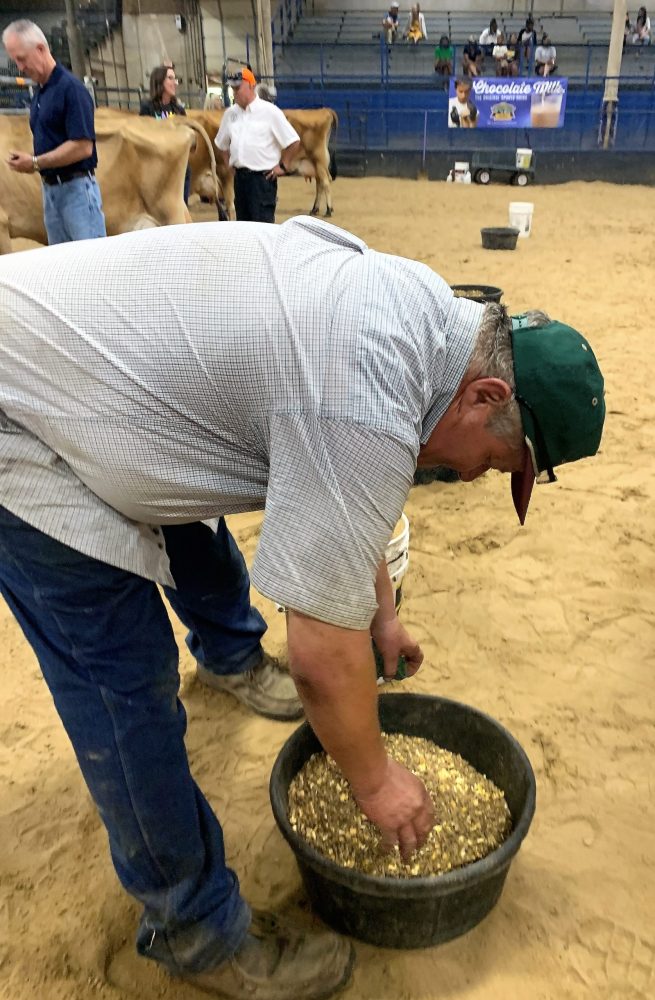
- Oilseed Meals. Cottonseed, soybean, and peanut meals often are manufactured as large pellets or cubes for feeding convenience. These are high protein (38-45 % CP), medium to high energy sources, commonly fed at 1-3 pounds a day. Although relatively costly per ton, they often are the cheapest source of protein. These feeds are most useful when supplemental protein, and little or no energy, is needed. Oilseed meals are especially suitable for dry cows in moderate to good flesh when they have access to adequate amounts of low protein, medium energy forages.
- Grain. Corn and grain sorghum (milo) are the most common low protein, high energy sources. Other grains include oats, wheat, and barley. Grains often are the cheapest sources of supplemental energy. Similar feeds include processed by products such as wheat mids, soybean hulls, and rice bran. These by products are slightly higher in protein and a little lower in energy than grains and are relatively low in starch. Starch can interfere with forage digestibility, so these are excellent supplements to forage. Feeds in this category commonly are found in breeder/range cubes.
- Breeder/Range Cubes. These are most commonly 20% CP but also are found as 30-32% products. These feeds are designed to provide a combination of protein and energy, fed in larger amounts (3 to 6 pounds a day) than high protein feeds. The equivalent of a 20% cube can be prepared with a mix of about one-third oilseed meal and two-thirds grain. A mix of about three-fourths meal and one-fourth grain is the equivalent of a 32% cube. Some cubes use nonprotein nitrogen (NPN), usually urea, to supply nitrogen for potential synthesis of rumen microbial protein. Cubes with low crude fiber (below 10%) generally are highest in energy. Whole cottonseed, brewers grains, and some corn gluten meals are similar in protein and energy content to these cubes.
- Protein Blocks and Liquids. These feeds usually contain 30-40% CP and typically are low to medium in energy. Their formulation or physical structure limits consumption to around 1 pound to 3 pound s daily. The protein portion often consists of 50-90% from NPN, but can be considerably lower. Their primary use is to provide supplemental protein on low protein, medium energy forages (below 7% CP, 50-52% TDN) where convenience of self-feeding is a priority. These feeds generally will not fill large voids of nutrient deficiency, nor support higher levels of animal performance.
- Syrup Blocks and Tubs. These generally range from 12% to 24% CP (often about half from NPN) and are medium in energy. Consumption of these blocks usually is very low (typically 1/2 pound to 1 1/2 pounds a day), so higher protein versions probably are most useful. These products are not intended to directly supply much supplemental protein or energy. Rather, their theoretical function is to stimulate rumen microbes to digest more forage and produce microbial protein, which can be utilized in the small intestine. For this to occur, sufficient amounts of at least moderately digestible forage must be available. These feeds work best when supplied year round, allowing accumulation of body fat reserves that animals can utilize during typical fall and winter decline in forage quality and quantity. They generally will not support high performance.
- Hays. High quality hays, such as alfalfa, peanut, and soybean, can be used as supplements. These medium protein (usually 15-20% CP), medium energy sources can be limit-fed in place of one of the feeds discussed previously. Such hays also can be fed free choice, although protein is wasted, if their cost is competitive.
Supplementation Strategies
Supplements must be chosen to meet particular nutrient deficiencies. Body condition is a key factor in the choice of supplements. Thin cows are relatively more deficient in dietary energy than in protein. In contrast, fleshier cows may need extra protein, if they need anything.
To minimize supplementation, use forage supplies logically. In general, hay (excluding supplemental alfalfa, etc.) should not be limit-fed with standing forage. Limit-feeding of hay encourages cows to reduce grazing and fails to use pastures while quality is reasonably good. For example, assume available forage for grazing or feed ing includes some tame pasture (such as coastalber mudagrass), some native range, and some hay. As winter approaches, the tame pasture should be used first, native range next, and hay last. That way each forage is utilized most efficiently, and there is a better chance some hay will be left in late winter to early spring when high quality green growth begins but is limited in amount.

It is difficult to make general recommendations about supplementation of protein and energy. Usually, dry mature cows in medium or higher body condition on typical dormant warm-season pasture or low quality hay often need only 1 pound to 2 pounds a day of a high protein feed. (On extremely low quality forage, such as tall-grass prairie in winter, 3 pound s to 4 pound s of high protein feed may be needed.) A thin, dry, mature cow may require 2 pound s to 4 pound s daily, but of a medium -protein, high-energy supplement. After calving, all of these amounts essentially should be doubled.
Daily feeding usually is not necessary when using high-protein supplements such as cottonseed meal cubes. Instead, depending on the amounts, weekly required totals can be divided and fed every other day, twice a week, or even once a week. In fact, nondaily feeding of these supplements often is more efficient. However, combination protein-energy supplements, especially breeder /range cubes and meal-grain mixes, that are required in larger daily amounts, generally should be fed daily for best forage utilization, highest animal performance, and greatest efficiency.
Self-fed, controlled consumption can be accomplished with some feeds, especially oilseed meals and meal-grain mixes, by including an intake limiter such as salt. Cattle then will consume salt in maximum amounts of approximately 0.1% of body weight, or about 1 pound of salt consumption daily by a 1,000 -pound cow. So, to obtain supplement consumption of 3 pound s daily in a 1,000 – pound cow, a mix of 1 pound salt to 3 pound s supplement should be provided. When using salt to limit consumption, plenty of high quality water must be available. Also, cows consume more of a salt-limited supplement when it is located close to a water supply.
Perhaps the most common supplement is a high quality 20% CP breeder /range cube (high or all-natural protein and low crude fiber ), or the equivalent. Such a supplement often is a compromise for the common situation of low quality forage and low to medium body condition. But this must be fed in adequate amounts, typically 3 to 6 pound a day, to be effective. In fact, with the exception of managing weight loss in fleshy cows, there are few situations where feeding smaller amounts of such cubes is applicable. If a producer is unwilling or unable to assume the cost of required amounts of these cubes (or the equivalent), then a lower amount of a higher protein feed should be fed. But realize, however, that body condition, reproduction, productivity, and profit are likely to decline if nutrient requirements are not met.
For more information on this or any other agricultural topic please contact the Hopkins County Extension Office at 903-885-3443 or email me at [email protected].
GE Healthcare Recalls CARESCAPE R860 Ventilator Due To Potential Early Backup Battery Failure

GE Healthcare is recalling CARESCAPE R860 Ventilator due to early failure of the backup batteries, including replacement backup batteries, manufactured on or after April 1, 2019, because the batteries may run out before they are expected to do so. If the ventilator is running on battery power only when the battery fails, ventilation could stop completely, preventing the patient from receiving oxygen and breathing support.
The U.S. Food and Drug Administration (FDA) has identified this as a Class I recall, the most serious type of recall. Use of these devices may cause serious injuries, serious health consequences, or death.
Recalled Product
CARESCAPE R860 Ventilator
- Product Name: CARESCAPE R860/Engstrom Carestation/Engstrom PRO Ventilator backup batteries and replacement backup batteries manufactured on or after April 1, 2019.
- Product Model Numbers: See recall database entries:
- Devices Recalled in the U.S.: 4,222
- Dates distributed: April 2, 2019, to April 18, 2022
- Date Initiated by Firm: April 18, 2022
Device Use
The CARESCAPE R860 ventilator is intended to provide mechanical ventilation or breathing support to infants (neonatal), children (pediatric), and adult patients weighing 0.25 kg and above.
The CARESCAPE R860 ventilator uses main AC power via a wall plug to operate. However, there is also a backup battery that is intended to keep the ventilator operating for a certain amount of time if a main AC power supply is not available, for example during a patient transport. Replacement backup batteries are available from the company to use when the original backup battery expires.
Reason for Recall
GE Healthcare is recalling CARESCAPE R860 ventilator backup batteries, including replacement backup batteries, manufactured on or after April 1, 2019, because the batteries may run out before they are expected to do so. If the ventilator is running on battery power only when the battery fails, ventilation could stop completely, preventing the patient from receiving oxygen and breathing support.
Lack of oxygen (hypoxia), especially if it occurs over a long period, can cause serious injury and death.
There have been 1,553 complaints, one injury, and no deaths associated with the use of this device.
Who May Be Affected
- Health care personnel who use Carescape R860 ventilators to support patient breathing
- People who receive breathing support using a Carescape R860 ventilator
What to Do
On April 18, 2022, GE Healthcare issued an Urgent Medical Device Correction letter to customers. The letter recommended that customers and/or users:
- Perform a Battery Performance Test (described under Appendix A of the correction letter):
- Immediately after receiving the device correction letter
- Every 3 months
- Before using if the device has been in storage for more than 3 months
- Continue to use the affected ventilators while the ventilator is connected to an AC mains power source that is supported by backup emergency power.
- If use of the ventilator by battery power is necessary, for example during transport where alternative options are limited, follow standard clinical practice when it comes to administering the appropriate readily accessible alternative ventilation, such as abag-valve system.
- Replace the batteries when necessary, before patient use.
- Keep the ventilator connected to the AC main power source when it is not in use, even when it is in storage. This will prevent battery discharge and degradation.
- Replace backup batteries at a minimum of every three years.
- Complete the Medical Device Notification Acknowledgement Response form and send to [email protected].
Contact Information
Customers with questions or concerns about this recall should contact GE Healthcare Service at 1-800-437-1171 or the local service representative.
Additional Resources
- Medical Device Recall database entries
How do I report a problem?
Health care professionals and consumers may report adverse reactions or quality problems they experienced using these devices to MedWatch: The FDA Safety Information and Adverse Event Reporting Program using an online form, regular mail, or FAX.



